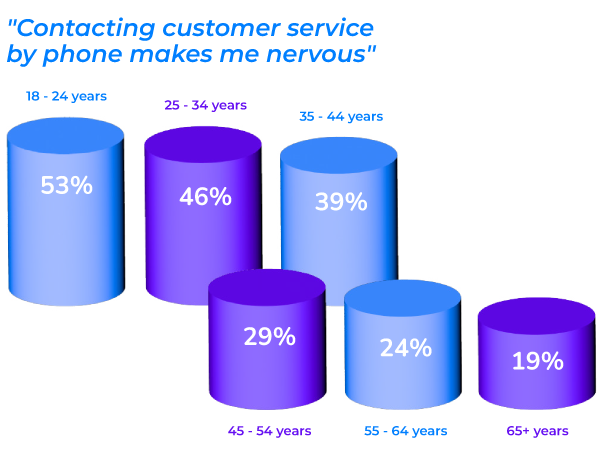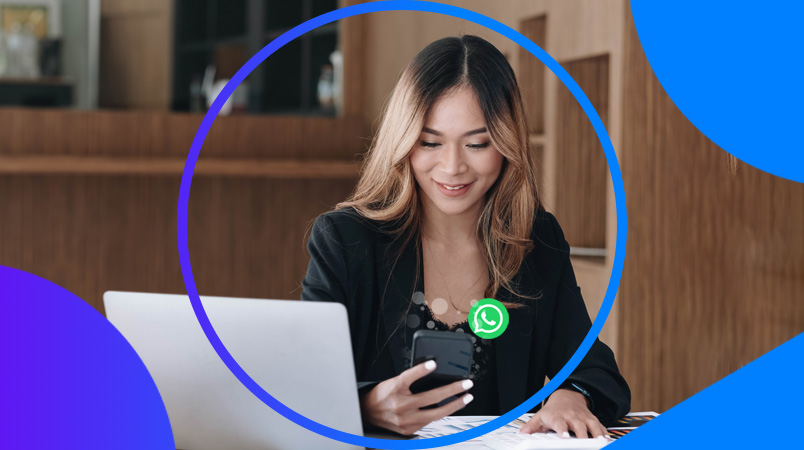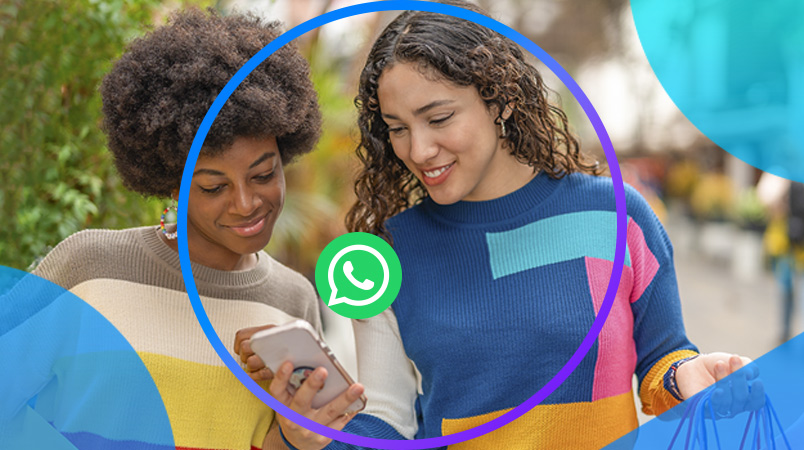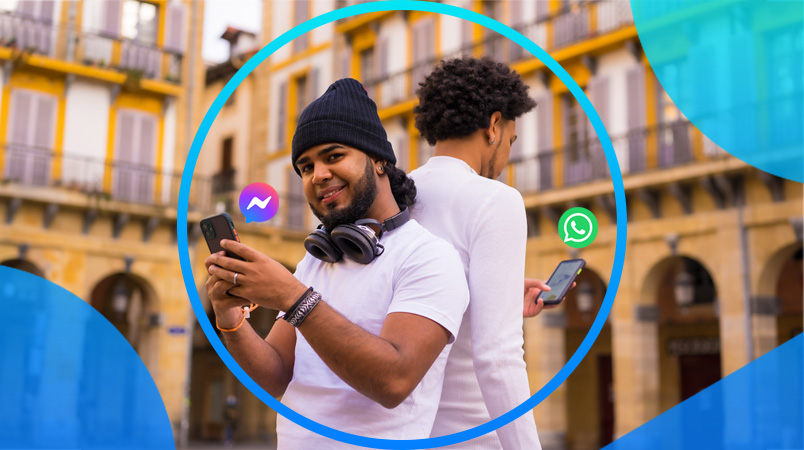There isn't a list of the most effective channels for customer service that applies to every company, every business, every person, and even every issue asks for a different approach. Demographics, the gravity of the situation, emotions, personal preferences, and physical context all come into play. At CM.com, we surveyed over 7000 consumers to determine their behaviour, preferences, and expectations regarding customer service. Hopefully, this data will help you find the most effective customer service channels.
We’ll have a look at the most common channels and then at everything that impacts channel choice.
Believe it or not, telephone is here to stay
Phoning a business is still the most preferred channel for customer service, with 61% of consumers preferring to use it. Customers appreciate speaking directly to a person and an expert to solve their issues. Phone support is known for its fast response times and 75% of consumers believe they will have a faster response if they directly call a business.
Most of our respondents (88%) want it to be as easy as possible to reach a company by phone. They expect to find the phone number on their website. However, four in five respondents say they only make a phone call when it’s really urgent. More than one out of three are nervous about picking up the phone and when looking at our respondents’ age, it was found that younger people are altogether more nervous about calling a company than the elderly.
Just under half of respondents assume they must be confrontational when calling customer service.

Most respondents felt thankful when asked what emotions they generally experience during phone support. The personal approach is still valued in many situations. Although the position and way of communicating via phone might change, but it won’t completely disappear.
Email should be faster
39% of consumers prefer to contact customer service via email. Email is generally used when there’s not too much urgency, however this does not mean expectations are not still high. Did you know consumers expect a response within 2.5 hours? While most companies aim to respond within 12 hours. That’s a big gap despite that 80% of marketers have reported an increase in the use of email for customer service.
More and more companies see that email becomes obsolete as a customer service channel when their customers embrace the ease and fast responses of other channels, but that doesn't mean responding to customer queries via email should be left for longer than a day.
Face-to-face service is personal, fast, and gratifying
One-third of our respondents prefer to be helped face-to-face, for instance in a store. Customers using this channel express gratitude more often, making it a good option for handling complex or urgent issues that require a personal touch. Consumers expect to be helped within 7 minutes, so avoid queuing.
Are chatbots frustrating or a good self-service option?
The second most popular service channel is the chatbot, preferred by 21% of respondents. Chatbots prove effective in handling a considerable volume of inquiries and delivering rapid responses, typically within a few minutes.
Despite 64% of individuals expecting a company to offer 24/7 availability, many initially attempt to troubleshoot issues independently before resorting to customer service. Interestingly, when given the choice between immediate assistance from a chatbot or waiting until the next day for human support, 67% opt for the latter. Evidently, consumers lean towards human support over chatbots, suggesting that current chatbot capabilities may not fully align with customer expectations, leading to frustration. Properly training your chatbot becomes crucial to ensure it can effectively assist your customers.
Live up to consumer expectations with Live Chat
58% of consumers consider it important for companies to be reachable via live chat. This channel provides faster response times than email and allows customers to multitask while waiting for a response, with an expected response time of 1 hour. Customer expectations for service are lower on Live Chat than for phone support - almost 80% expect more service via phone than via chat.
Companies used to be hesitant to add live chat to their website whereas it’s fully embraced nowadays. Instead of investing more time and money integrate live chat with a chatbot to give your customers the best experience.
WhatsApp, Telegram, and WeChat
37% of customers expect customer service to be accessible via messaging platforms. While this may sound low, we see a big difference between age groups. About 50% of respondents younger than 35 expect to be able to reach companies via channels such as WhatsApp or Telegram. These channels are commonly used to communicate with friends and family, but consumers embrace them to contact businesses more and more too.
These types of channels provide fast response times, but consumers also have high expectations. They expect a response within 45 minutes and will let you know when it takes too long. Consumers using WhatsApp express impatience more often than gratitude. Keeping your messages short and simple will improve the conversation and time to a solution.

What impacts channel choice?
As mentioned before, everyone has their own preferences. So how do you know where to focus as a company? A few trends we see in the market impact channel choice. You can consider these to get to know your customers and their preferences, and see what fits them best.
46% use multiple channels at once
Who likes to wait? Right, no one. Consumers use multiple channels simultaneously, only to get a faster response. Don’t focus too much on finding your customers’ favorite channel. Focus on managing all channels in an efficient way.
Prepare for the next generations
Gen Z and Millennials generally have other expectations than older generations. Over 70% of them expect customer service to be available 24/7. Moreover, they are likelier to walk away after a bad customer service experience. These youngsters are even more hesitant to reach out and are anxious about calling a company. Not surprisingly, for these generations, it’s important that a company is available via messaging apps and live chat. They are also more embracing chatbots than the previous generations.
42% feel impatient during service interactions
In customer service, we experience many emotions. Customers and employees. Did you know more than 2/5 feel impatient when contacting service? Emotions depend of course on the situation at hand, waiting times, and other feelings of that day. However, it’s also affected by the channel they choose. For personal contact, more people feel grateful. People tend to feel more impatient for channels with longer waiting times. It also works the other way around – emotions also impact channel choice. When someone is already annoyed, they’ll want a faster, more personal solution.
Not one interaction is the same
Nor is not one issue. When a customer has an easy question they want to verify quickly, a chatbot is probably sufficient. The urgency is not that high. But when it is high, for example when a present didn’t arrive yet, but the birthday is already tomorrow, they want to speak to you on the phone. Fast. Or when it gets emotional, think about when someone got sick or has personal circumstances to deal with, they’ll also want to speak to a real person. The last thing they want to worry about is the service they require. Type of issue and urgency impact channel choice a lot.
Living in the moment
How someone reaches out to customer service doesn’t only depend on the issue at hand, urgency, or emotional state. It’s also affected by the physical context. Where is the customer at that time? You might recognize it yourself: you’re on the toilet when you remember you should ask your insurance if your new medicines are covered. A quick WhatsApp message does the trick. Or when you’re stuck in traffic and you remember your new jacket should have arrived yesterday. Then it’s easier to (hands-free) call the webshop. Many interactions start in a moment while they are busy doing something else. Time also matters, if it’s late in the evening, it’s easier to send an email or SMS. You know you have to wait for a reply. During office hours, it can be easier to call.
So, what are the most effective customer service channels?
To be the most effective, brands need to be transparent. Show your customers how they can best reach you and what the expected waiting times are. Ensure you can manage all service channels efficiently from one tool.
A customer service strategy is different for every company. Get to know your potential customers, ask what they prefer, and use data to optimise.








